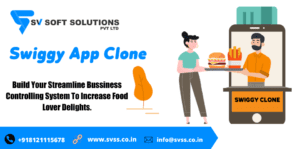
Business Models For On-Demand Food Delivery Apps
On-demand food delivery startups have an equivalent psychological value within the on-demand economy–all food delivery startups pledge to save lots of people time and energy when it involves ordering food and getting food.Business Models For On-Demand Food Delivery Apps
However, after Uber, several food companies have entered the marketplace on demand, many of which do well within the food industry. they supply their customer base with the convenience they deserve. And, their research into convenience has found several ways for his or her clients to save lots of time and energy .
Food startups have made the choice taking quick and straightforward . For starters, you’ll view ratings and reviews on Zomato, UberEats and similar food delivery startups before ordering food from the restaurant. skills much does on-demand delivery app cost?
In fact, they made the payment process quick and straightforward to pay too. for instance, food delivery apps like Uber allow users to pay with cards or pay from wallets like Paytm or other digital wallets also.
Food startups have also made re-buying easy actually. as an example, after you order restaurant food, you’ll bookmark your favourite dishes/restaurants and save your address alongside your payment details, etc. to form it easy to reorder within minutes
1. The Order Only Model
The model is followed by many food delivery services like Delivery Hero, JustEat etc., and is pure tools for independent restaurant ordering. The key point of sale of this online food delivery business model is to draw in new customers through both an integrated web and mobile channel.
The food ordering process works this manner under this model:
Customers put an order on the website/mobile app first.
The restaurant will then collect your order via the app or dashboard.
The restaurant will alert the order has been received via an email or an automatic call.
Delivery Process
The delivery process has two different possible scenarios.
By the delivery one that is used by the restaurant.
By the delivery one that is used by the corporate.
2. The Order & Delivery Model
The new startups of food delivery apps like zomato, swiggy etc in the primary and third components – ordering and delivery.
What they are doing is, they carry customer orders and requests to the stores, and handle the distribution by themselves. In distribution, they typically work with several individual courier service providers that are linked through an app like Uber for both receiving customer orders and exchanging delivery details with courier service providers.
The Food Ordering Process
The orders are submitted within the app or website, where all the menus are posted from different restaurants. When a restaurant receives an order from the food delivery app, then the restaurant notifies the delivery company of the time to gather the package and therefore the address of the destination.
Sometimes they mark the worth of the restaurant goods to assist restaurants to pay the commission fee for the delivery service. for every restaurant they place their order, customers also are charged a predefined flat fee.
